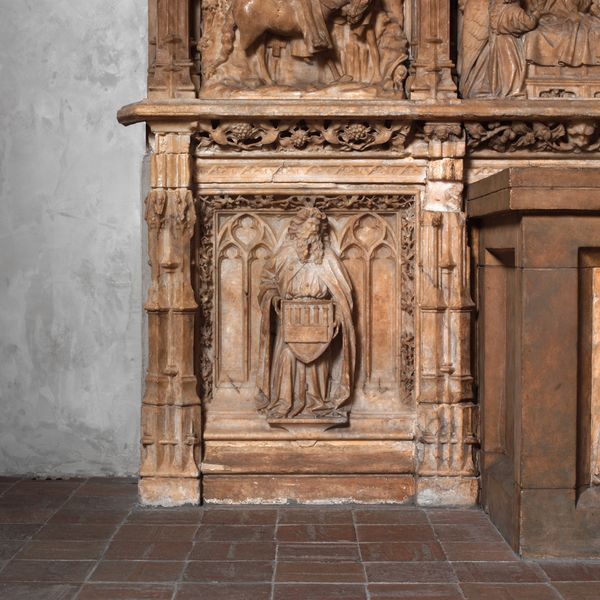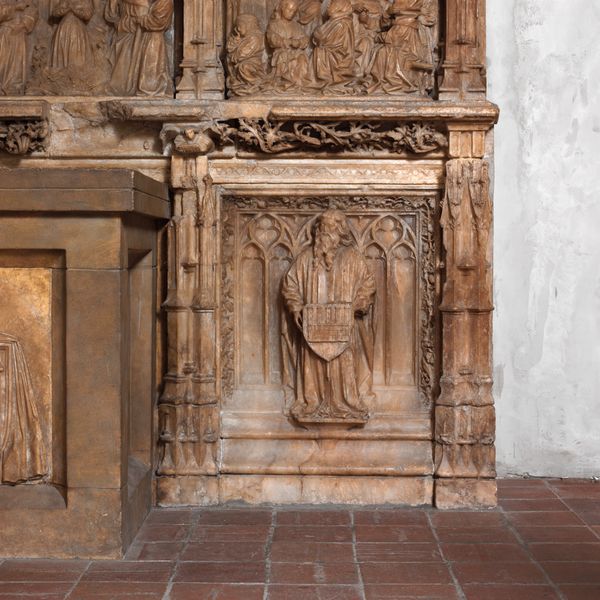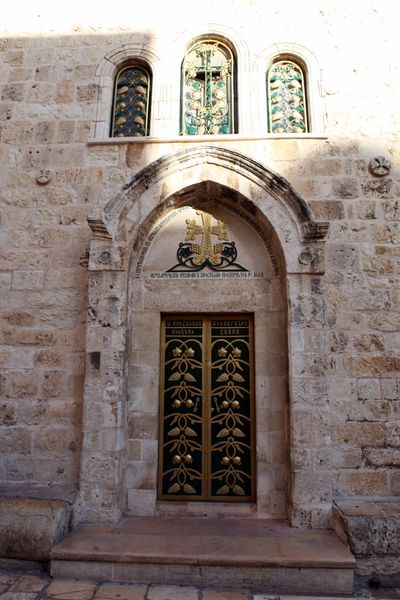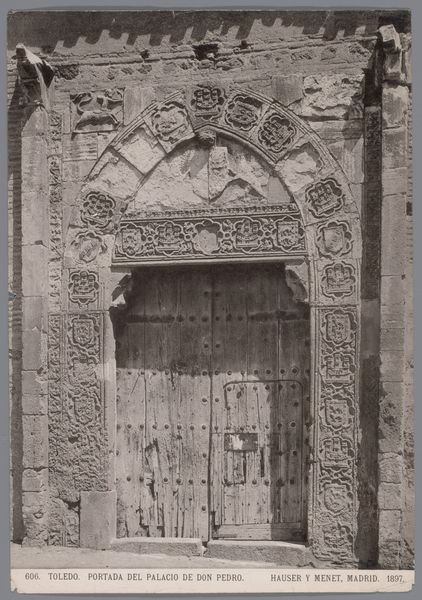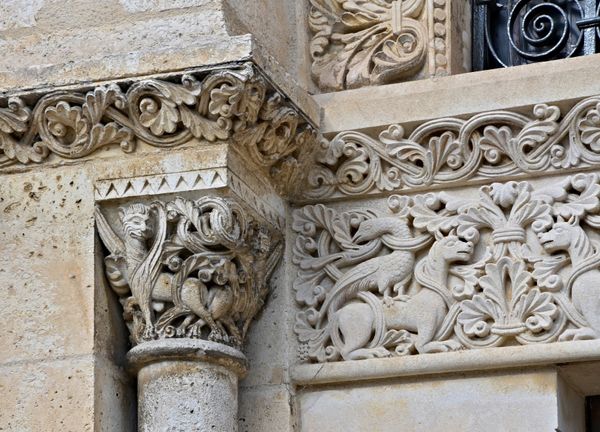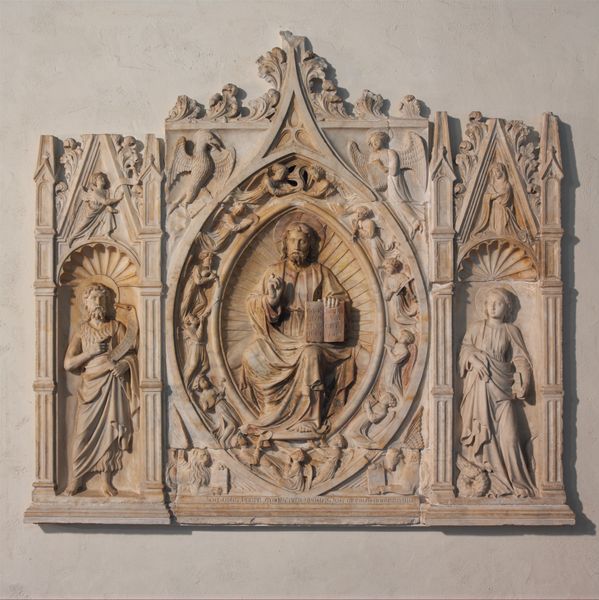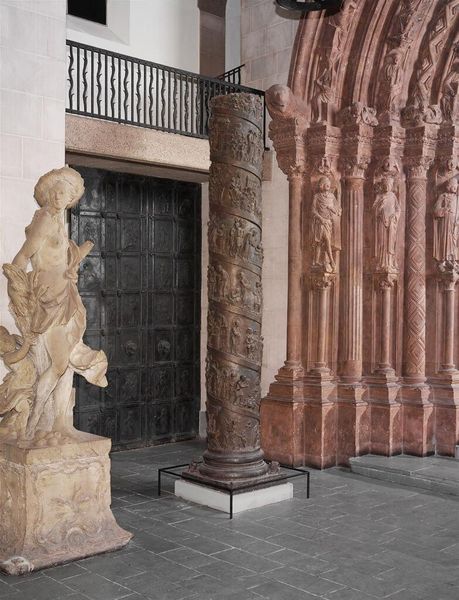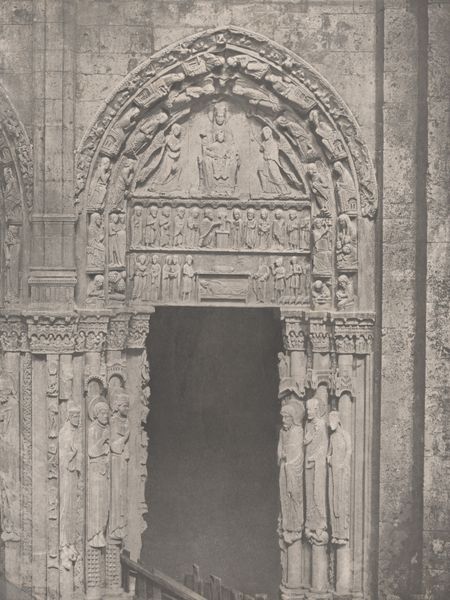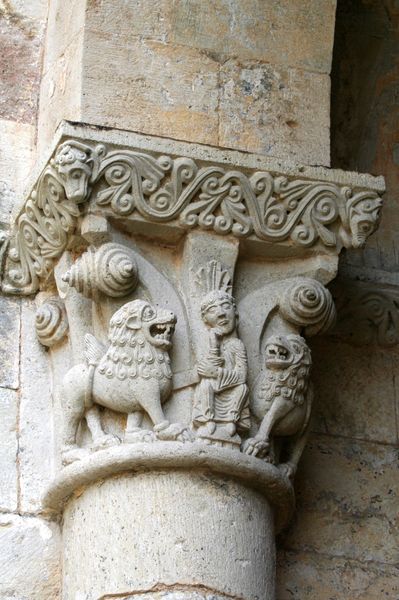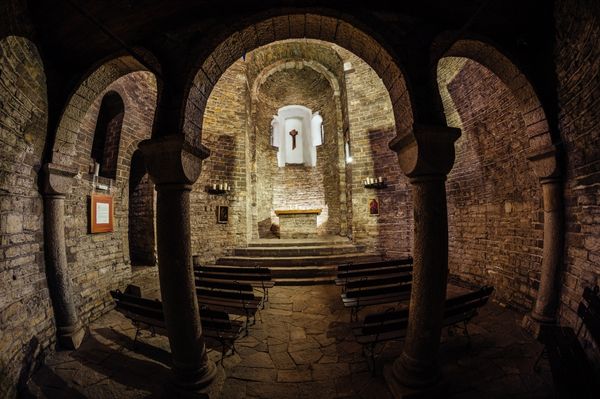
Portal from the Church of San Leonardo al Frigido 1170 - 1180
0:00
0:00
carving, relief, sculpture, architecture
#
medieval
#
carving
#
relief
#
historic architecture
#
form
#
traditional architecture
#
romanesque
#
geometric
#
sculpture
#
history-painting
#
italy
#
architecture
Dimensions: 13 ft. 2 in. × 76 in. × 14 in. (401.3 × 193 × 35.6 cm)
Copyright: Public Domain
Curator: This is a portal from the Church of San Leonardo al Frigido, carved sometime between 1170 and 1180 by the sculptor Biduinus. It's a magnificent example of Romanesque carving. Editor: My immediate impression is one of solemnity and restraint. The muted stone, combined with the linear procession of figures, creates a remarkably still composition. Curator: Absolutely. The composition adheres to several principles, including symmetry and geometric arrangements of volumes. See how Biduinus divided the doorframe into clearly defined zones using horizontal registers and vertical pilasters? These contain alternating biblical narratives. Editor: I see. Figures emerge in layered tiers: notice the cavalcade above the door and individual relief panels on each side of the passageway. What figures dominate this cultural narrative? Curator: Christ undoubtedly occupies the position of supreme importance. Consider how the flanking images point toward themes of sacrifice and redemption: Cain and Abel’s offerings, the sacrifice of Isaac. Note too how he reappears as triumphant king above the door, welcomed by throngs. Editor: The stylized treatment of drapery adds a rhythmic quality to the flanking pilasters and the lintel. I also observe a repeated, rounded arch that suggests a symbolic order underlying the world and man's role within that cosmos. Curator: Yes, Romanesque sculpture consciously rejected naturalism. There’s a powerful abstraction at work. The emphasis isn't on realism, but on conveying spiritual meaning through simplified forms and stylized gestures. This formal simplicity is vital to its impact. Editor: These symbolic components give the piece a unique position in collective cultural memory, like a visual cornerstone of the medieval Church’s aesthetic expression. One can't help but see its influence echoing through generations of devotional iconography. Curator: I agree. Biduinus managed to create a harmonious composition. Through line, mass, and balanced spatial relationships, Biduinus made something timeless. Editor: And, through Biduinus’ skillful articulation of culturally relevant themes, the sculpture achieved permanence within the history of symbols.
Comments
No comments
Be the first to comment and join the conversation on the ultimate creative platform.
